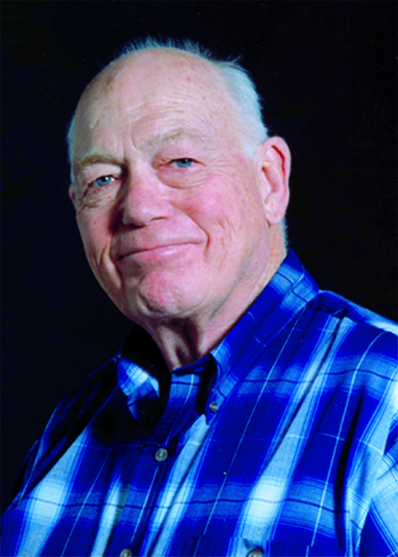In Memoriam: John Carroll Taschner
1930-2016
by Kenneth Groves

♦♦♦
To view the HPS History Committee interview with John Taschner, click here.
♦♦♦
Lieutenant Colonel John Carroll Taschner, CHP, a resident of Albuquerque, New Mexico, since 2006, died at the age of 86 after a heroic battle with lung cancer.
John was born in Hemet, California, on 3 April 1930 and received his BS degree in biological sciences from San Jose State College, San Jose, California, in 1953. John's career in health physics began at the Los Alamos Scientific Laboratory (now Los Alamos National Laboratory [LANL]) where he was assigned as a first lieutenant with the U.S. Air Force (USAF) in September 1958 for a year of training in health physics and nuclear weapon design. Within one month, John was assigned to the Nevada Test Site, where he was a participant in the above-ground nuclear test Operation Hardtack II.
In 1961 John was assigned to the USAF Medical Service School, Gunter Air Force Base, where he served for three years as an instructor in health physics and nuclear weapon effects. In 1964 the USAF assigned him to the University of Kansas, Lawrence, Kansas, where he received his master of science degree in radiation biophysics in 1966.
From 1966 until 1970 he was assigned to the USAF Radiological Health Laboratory at Wright-Patterson Air Force Base in Dayton, Ohio, where he was responsible for providing health physics support to USAF installations in the continental United States and to the National Aeronautics and Space Administration (NASA) during the Apollo Program. He managed the Personnel Dosimetry Program that provided radiation dosimetry to some 400 USAF installations worldwide. He also managed the Air Force Radiochemistry Branch that routinely analyzed thousands of urine samples from personnel who were involved in the cleanup operations following nuclear weapon accidents at Wright-Patterson Air Force Base; Palomares, Spain; and Thule, Greenland. In addition, John provided on-site health physics support in Thule.
From 1970 until his retirement in July 1974, John was the health physicist for the USAF in Europe, where he provided health physics support to all USAF bases in Europe and continued to provide support to NASA during Apollo launches.
Following his USAF retirement as a lieutenant colonel in 1974, John joined the U.S. Public Health Service Bureau of Radiological Health in Rockville, Maryland, where he coordinated the development of radiation safety standards for diagnostic x-ray equipment. He provided health physics support to the state of Pennsylvania during the Three Mile Island reactor accident. John also was the project manager for the U.S. Public Health Services Personnel Dosimetry Program that provided services to some 5,000 public health employees at about 250 facilities throughout the United States.
In August 1983 John became the first civilian deputy director of the U.S. Navy's Nuclear Weapons Radiological Controls Program Office, Naval Sea Systems Command, where he was responsible for providing radiation safety for U.S. Navy nuclear weapons, both afloat and ashore. The office later became the U.S. Navy's Radiological Controls Program Office with the acquisition of the Radiological Affairs Support Office, which expanded the program to manage all sources of radiation and radiological materials in the U.S. Navy other than nuclear propulsion and medical.
After retiring from the U.S. Navy in 1992, John joined the staff of LANL as a technical staff member in the Hazardous Response Group where he was a senior member of the Department of Energy's Radiological Assistance Program and a key member of the Radiological Assistance Program Training for Emergency Response (RAPTER) training staff.
John retired from LANL in October 2002. After retirement he lived in Sparks, Nevada, and Albuquerque, New Mexico. He volunteered as a docent at the National Museum of Nuclear Science and History and as a guest lecturer at the Defense Nuclear Weapons School on Kirtland Air Force Base.
He also wrote books on nuclear-weapon accidents and his autobiography, From Apricots to Atom Bombs. Over the years, John was very supportive and helpful to the Nuclear Testing Archive housed in Las Vegas, Nevada, where he regularly reviewed documents and other acquisitions.
John was a certified health physicist, a fellow of the Health Physics Society (HPS), and the recipient of the Society's Founders Award in 2015. He was a past member of the HPS History Committee, where he served as chairman for six years. John received his 50th anniversary certificate as a member of the HPS in 2009.
John was a charter member of the HPS Military Health Physics Section. The section honored him in 2014 by naming its senior award given annually the "John C. Taschner Leadership Award." John was also active in the Rio Grande Chapter of the HPS.
John is survived by his son Robert (also a member of the HPS) of Martinsburg, West Virginia, and his daughter Karen and husband John Chimarusti of Sandia Park, New Mexico, and four granddaughters. John is also survived by his stepdaughter, Kathy Young, who was his caretaker for the last year of his life.
He was a wonderful father, grandfather, and friend; he will be missed by all who had the pleasure of knowing and working with him. See John's citation for his Founder's Award for additional details of the life of this truly great health physicist.




